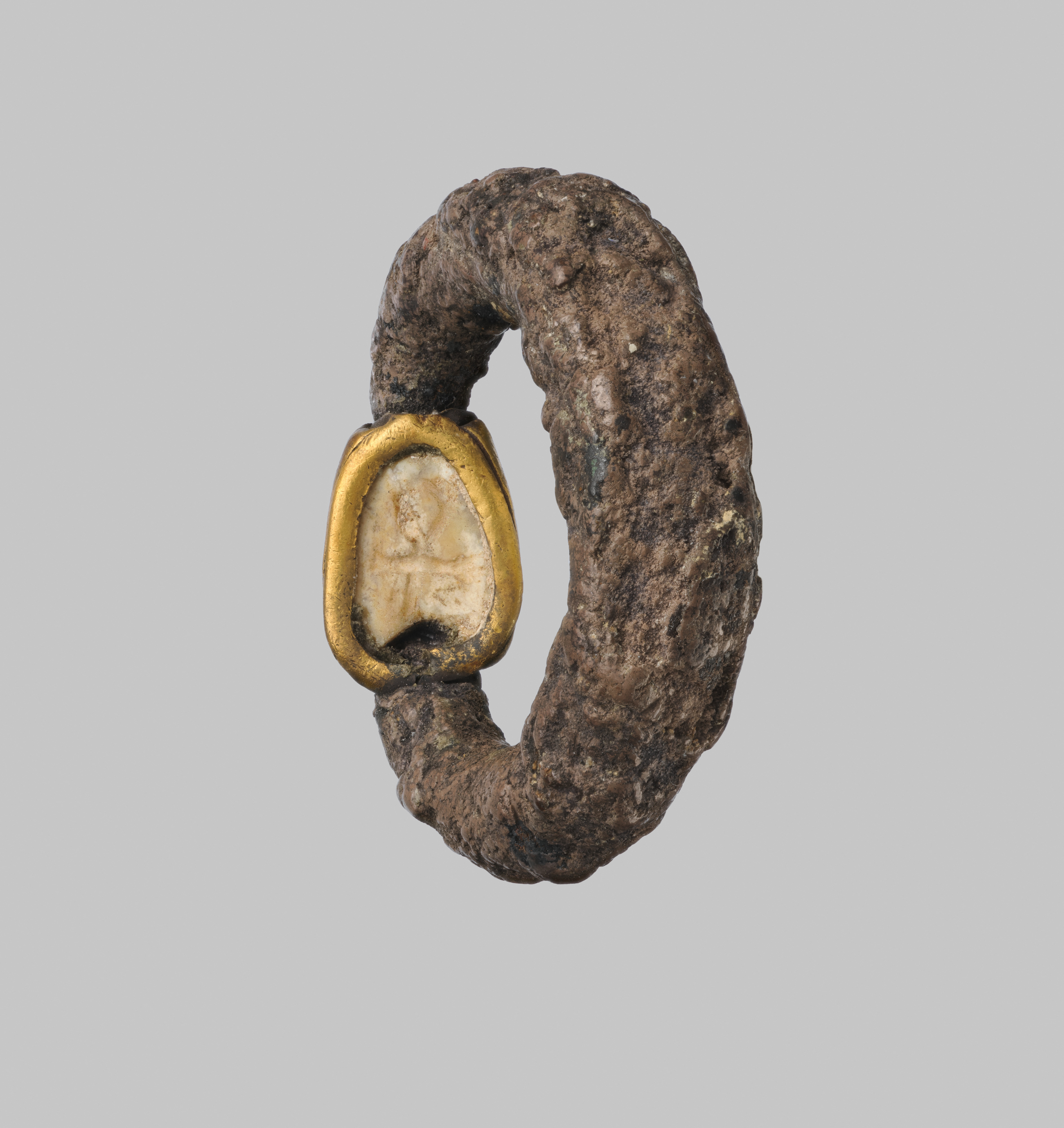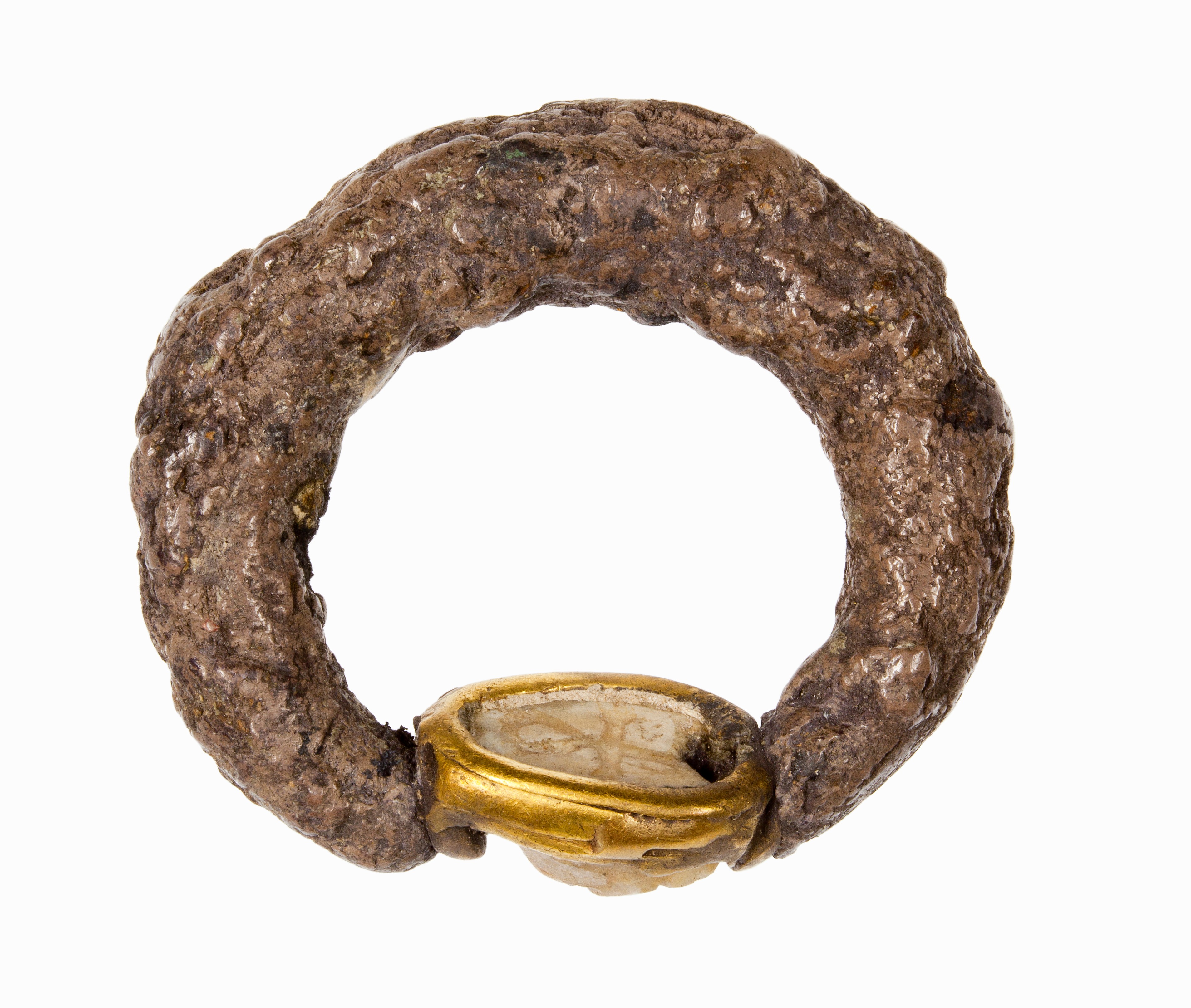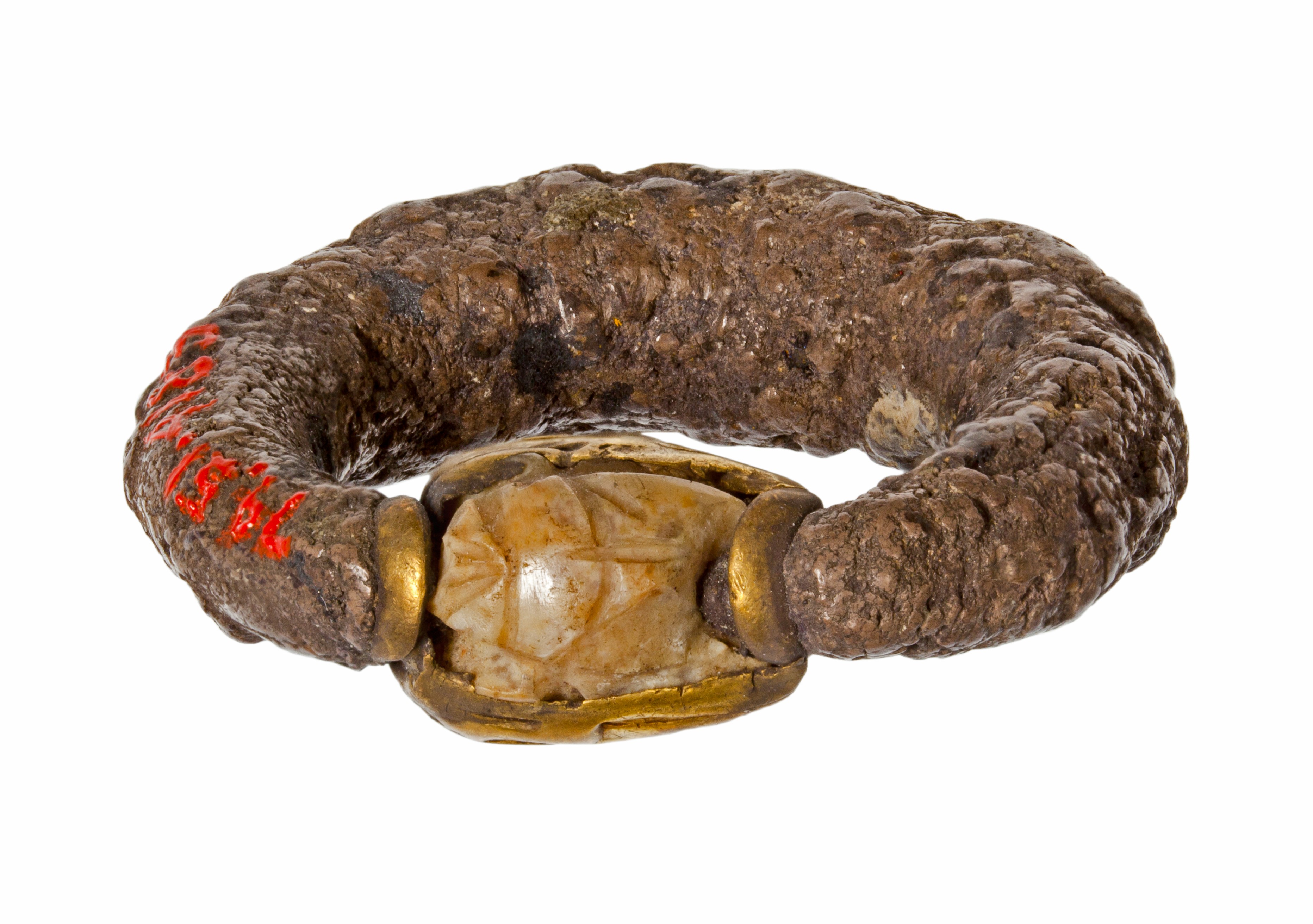Ring with a scarab inscribed with an ankh
Third Intermediate Period
Not on view
Set into a gold foil housing and used as the bezel of a silver ring, this scarab is made of travertine (Egyptian alabaster). On the base is an ankh, theancient Egyptian hieroglyph for life.
This ring was likely discovered somewhere in the Eastern Mediterranean. It was originally part of the collection of Luigi Palma di Cesnola, first director of The Met, and was purchased in 1874. It bears the earliest accession number in the Museum's collection of ancient Egyptian art.
Due to rights restrictions, this image cannot be enlarged, viewed at full screen, or downloaded.
This artwork is meant to be viewed from right to left. Scroll left to view more.






